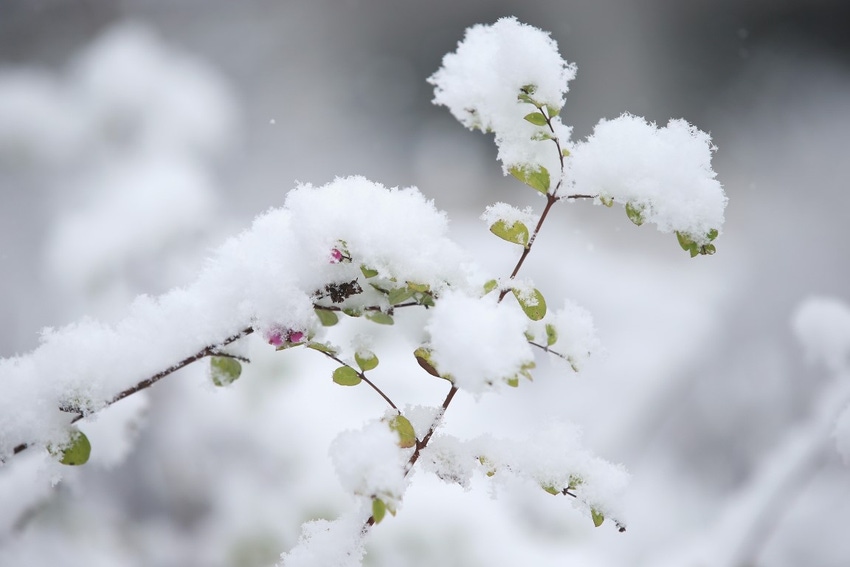
Initial California snowpack reading better than year ago
DWR Director Mark Cowin says the heavy snowfall so far during Water Year 2016 has been a reasonable start, but another three or four months of surveys will indicate whether the snowpack’s runoff will be sufficient to replenish California’s reservoirs by this summer.
January 3, 2016

The California Department of Water Resources (DWR) conducted the winter’s first media-oriented manual snow survey on Dec. 30 and found higher-than-average water content for the statewide snowpack.
Officials said snowfall during the remainder of the winter will largely determine whether California’s drought will linger into a fifth year.
DWR Director Mark Cowin said the heavy snowfall so far during Water Year 2016 “has been a reasonable start, but another three or four months of surveys will indicate whether the snowpack’s runoff will be sufficient to replenish California’s reservoirs by this summer.”
Each water year begins on Oct. 1 and ends the following Sept. 30.
DWR conducts five media-oriented snow surveys in the Sierra Nevada each winter – near the first of January, February, March, April and May – at the Phillips Station plot (elevation 6,800 feet) located off Highway 50 near Sierra-at-Tahoe Road 90 miles east of Sacramento.
Frank Gehrke, chief of the California Cooperative Snow Surveys Program, said more than four years of drought have left a water deficit around the state that may be difficult to overcome in just one winter season.
“Clearly, this is much better that it was last year at this time, but we haven’t had the full effect of the El Niño yet,” Gehrke said.
“If we believe the forecasts, then El Niño is supposed to kick in as we move through the rest of the winter. That will be critical when it comes to looking at reservoir storage.”
The state’s largest six reservoirs currently hold between 22 percent (New Melones) and 53 percent (Don Pedro) of their historical averages in late December. Storage in Lake Shasta, California’s largest surface reservoir, is 51 percent of its December 30 average.
The Dec. 30 manual survey found a snow depth of 54.7 inches – 16 inches more than the average depth measured there since 1965 – and 16.3 inches of water content, 136 percent of the January 1 average for that site.
More telling
More telling than a survey at a single location, however, are DWR’s electronic readings today from 99 stations scattered throughout the Sierra Nevada.
Measurements indicate the water content of the northern Sierra snowpack is 11 inches, 108 percent of the multi-decade average for the date. The central and southern Sierra readings were 12.1 inches (116 percent of average) and 7 inches (86 percent) respectively. Statewide, the snowpack held 10.2 inches of water equivalent, or 105 percent of the December 30 average.
One year ago, the north, central, south and statewide readings respectively were 5.8 inches (57 percent of average), 4.7 inches (45 percent), 4.0 inches (48 percent) and 4.8 inches (50 percent).
In normal years, the snowpack supplies about 30 percent of California’s water needs as it melts in the spring and early summer. The greater the snowpack water content then the greater the likelihood California’s reservoirs will receive ample runoff as the snowpack melts to meet the state’s water demand in the summer and fall.
For the latest on western agriculture, please check out Western Farm Press Daily and receive the latest news right to your inbox.
You May Also Like



